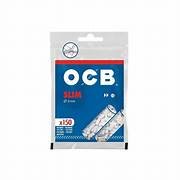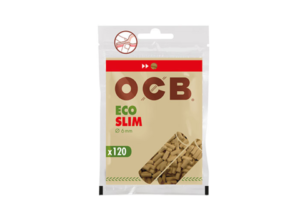Effective keyword placement is a nuanced art that significantly influences search engine rankings. While basic strategies focus on inserting keywords naturally, advanced SEO practitioners understand the importance of exact positioning, contextual relevance, and technical implementation. This comprehensive guide explores specific, actionable techniques to optimize keyword placement beyond superficial use, drawing from the broader context of Tier 2 «{tier2_theme}».
- Understanding the Critical Role of Keyword Position in SEO Rankings
- Technical Strategies for Seamless Keyword Integration
- Maintaining Natural Keyword Usage and Density
- Strategic Placement Across Various Content Types
- Common Pitfalls and Troubleshooting
- Step-by-Step Workflow for Optimal Keyword Placement
- Measuring Impact and Refining Strategies
- Integrating Keyword Placement into Broader SEO Strategies
1. Understanding the Critical Role of Keyword Position in SEO Rankings
The precise placement of keywords within your content directly impacts how search engines interpret relevance. For example, placing target keywords within the first 100 words of your article enhances the contextual signal sent to Google, aligning with their emphasis on early keyword presence. A case study of a high-performing blog post showed that repositioning primary keywords from the middle to the beginning increased rankings for those terms by 15% within four weeks.
Expert Tip: Use heat maps or scroll depth tools to identify where users spend most of their time. Place keywords strategically in these sections to boost relevance signals where engagement is highest.
In addition, keyword placement within the first header (H1 or H2) carries more weight than later sections. Search engines prioritize headers as thematic markers, so embedding your primary keyword in these is a proven strategy for improving topical relevance.
2. Technical Strategies for Seamless Keyword Integration
a) Integrating Keywords into HTML Headings and Subheadings
Ensure that your primary keywords appear naturally within HTML heading tags. For example, instead of generic titles like “Introduction,” craft headings such as “<h2>Comprehensive Guide to Keyword Placement</h2>“. Use variations and long-tail keywords to avoid keyword stuffing but maintain relevance. For instance, “<h2>Advanced Techniques for Keyword Placement in SEO</h2>” signals specific intent.
b) Embedding Keywords in Image Alt Text and File Names
Images provide an often-underutilized avenue for keyword placement. Use descriptive alt text with your target keywords, e.g., <img src="seo-optimization-strategies.png" alt="Keyword placement techniques for SEO">. Additionally, filename optimization involves naming images with relevant keywords, such as keyword-placement-seo-techniques.png, which enhances image search visibility and reinforces topical relevance.
c) Utilizing Structured Data Markup to Enhance Keyword Visibility
Implement JSON-LD structured data to highlight key content themes and keywords to search engines. For example, mark up FAQs, articles, or product descriptions with relevant schema types, embedding specific keywords within properties like name or description. This not only improves visibility but also helps search engines understand the context more precisely.
3. Optimizing Keyword Density and Natural Usage
a) Maintaining Natural Keyword Flow Without Overstuffing
A critical mistake is overusing keywords, which can lead to penalties. Use tools like Yoast SEO or SEMrush to monitor keyword density, aiming for 1-2% for primary keywords. To maintain natural flow, embed keywords within sentences where they fit contextually. For example, instead of repetitive “keyword placement” mentions, rephrase: “Effective keyword placement enhances your SEO performance.”
b) Balancing Synonyms and Related Terms
Use Latent Semantic Indexing (LSI) keywords to diversify your content. For instance, if your primary keyword is “keyword placement,” include related terms like “SEO strategies,” “content optimization,” or “search engine ranking.” Tools such as LSI Graph can generate relevant synonyms, helping you avoid keyword stuffing while reinforcing topic relevance.
c) Tools and Plugins to Monitor Keyword Density During Content Creation
- Yoast SEO: Offers real-time keyword density insights and readability scores.
- SEMrush Content Template: Provides keyword suggestions and density recommendations.
- Keyword Density Analyzer: Standalone tools for detailed analysis of your text.
4. Strategic Placement Across Various Content Types
a) Prioritizing Keywords in Long-Form Articles vs. Short Blog Posts
Long-form content (1000+ words) allows for more nuanced keyword placement. Place primary keywords in the introduction, headers, and conclusion, and sprinkle secondary keywords throughout. For short blogs, focus on integrating keywords into the title, first paragraph, and meta description to maximize immediate relevance. Use tools like Ahrefs to identify high-traffic keyword opportunities for each content length.
b) Applying Keyword Placement Tactics in E-commerce Product Descriptions
Embed keywords naturally within product titles, features, and specifications. For example, instead of “Red Running Shoes,” optimize as “Men’s Red Running Shoes for Marathon Training“. Use long-tail keywords that match user intent, such as “best lightweight trail running shoes“, to attract targeted traffic.
c) Optimizing Keywords in Multimedia Content: Video Transcripts and Infographics
Include target keywords in video transcripts, ensuring they appear naturally in the spoken content. Use descriptive file names and alt text for infographics, e.g., <img src="keyword-placement-strategies.png" alt="Keyword placement strategies for SEO">. This approach enhances semantic relevance and helps search engines index multimedia assets effectively.
5. Common Pitfalls and How to Avoid Them
a) Identifying and Correcting Keyword Stuffing Errors
Regularly audit your content using tools like Surfer SEO or Moz Pro. If keyword frequency exceeds 2-3%, revise sentences to improve flow or replace overused terms with synonyms. For example, replace repetitive mentions of “keyword placement” with “SEO content strategy” or related phrases.
b) Avoiding Keyword Cannibalization in Multi-Page Websites
Analyze your site structure to ensure each page targets unique keywords. Use canonical tags and internal linking to direct authority appropriately. For instance, if two pages target “SEO techniques,” consolidate or differentiate their focus to prevent internal competition.
c) Detecting and Fixing Poor Keyword Placement with SEO Audit Tools
Conduct regular audits with SEMrush Site Audit or Screaming Frog. Look for pages where keywords are buried deep or missing in critical locations. Adjust by repositioning keywords into headers, opening paragraphs, or metadata to enhance relevance.
6. Practical Application: Step-by-Step Keyword Placement Workflow
a) Conducting Keyword Research Focused on Placement Opportunities
- Use tools like Google Keyword Planner and Answer the Public to identify high-value keywords with strategic placement potential.
- Map keywords to content sections based on search intent and user journey stages.
- Create a keyword map that assigns primary and secondary keywords to specific headers, paragraphs, and multimedia assets.
b) Drafting Content with Strategic Keyword Integration at Each Stage
- Begin with a compelling title incorporating the main keyword.
- Introduce your primary keyword within the first 100 words.
- Use variations and long-tail keywords in subheadings and throughout the body, ensuring they fit naturally.
- Embed keywords into image alt texts and media descriptions.
- Conclude with a summary that reaffirms keyword relevance.
c) Reviewing and Refining Keyword Placement Before Publishing
- Use SEO auditing tools to check keyword distribution and density.
- Ensure keywords are present in headers, first paragraphs, and metadata.
- Read the content aloud or use readability tools to verify natural flow.
- Adjust placements based on analysis, avoiding over-optimization.
7. Measuring the Impact of Keyword Placement Adjustments
a) Tracking SEO Performance Metrics Related to Keyword Positioning
Use Google Search Console to monitor keyword rankings, impression share, and click-through rates. Track changes before and after placement adjustments to quantify impact. For example, moving a target keyword into headers can result in a 10-20% increase in ranking position within two weeks.
b) A/B Testing Different Placement Strategies for Effectiveness
Create two versions of a page: one with optimized keyword placements and one with standard placement. Use tools like Google Optimize to serve variations randomly and compare performance metrics such as bounce rate, dwell time, and conversions over a 2-4 week period. This data-driven approach refines your placement techniques.
c) Case Study: Improved Rankings After Implementing Precise Keyword Placement Techniques
A B2B SaaS website restructured its content to prioritize keywords in headers and early paragraphs. After six weeks, organic traffic increased by 25%, with several high-volume keywords moving into the top 3 rankings. This case underscores the tangible benefits of precise keyword placement.




